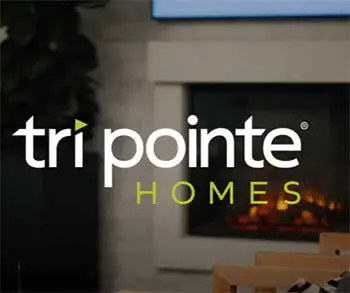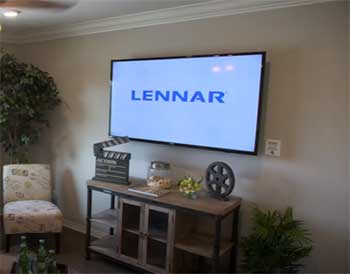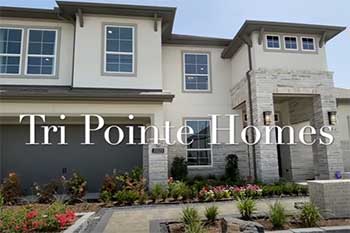When it comes to finding a new home, buyers have no shortage of options when it comes to production homebuilders. Two of the biggest names in the industry are Tri Pointe Homes and Lennar, companies with national footprints that build thousands of homes each year.
While both construct homes across a range of prices and styles, there are some key differences between these two home building giants.
Looking into the background, history, building practices, sustainability efforts, and more can help home shoppers make an informed decision. Here’s an in-depth look at how Tri Pointe and Lennar stack up:
Key Differences At A Glance
| Category | Tri Pointe Homes | Lennar |
| Year Founded | 2009 | 1954 |
| Headquarters | Irvine, CA | Miami, FL |
| States with Operations | CA, CO, NC, NV, TX, WA | Over 20 states nationwide |
| Typical Home Prices | $400k – $1M+ | $200k – $700k |
| Home Styles | Mostly detached single-family | Detached, attached, urban |
| Typical Lot Sizes | Medium to large | Small to medium |
| Green Building Focus | Medium | High |
| Design Studio for Options | Yes | Yes |
| Technology Integration | Medium | High |
Now let’s take a deeper look at each of these major production homebuilders and how they compare across some of the key factors homebuyers consider during their search process.
Typical Home Styles and Sizes Comparison

The typical style and size of homes offered by Tri Pointe and Lennar have some overlaps, but also key differences.
Tri Pointe Homes focuses almost exclusively on detached single-family homes on medium to large suburban lots.
Their floor plans range from around 1,500 – 5,000+ square feet.
Tri Pointe subdivisions tend to have a spacious, open feel and cater to move-up buyers.
Home styles offer flexible living spaces and options like first-floor master suites. Exteriors feature Craftsman, Spanish, Tuscan, and other architectural detailing. Tri Pointe often builds homes next to parks, trails, and open spaces to promote a feeling of community.
Lennar builds single-family homes on a range of smaller to medium-sized lots. Their detached homes range from around 1,600 to over 3,000 square feet. Lennar also offers attached townhomes and condos in certain markets to serve entry-level and downsizing buyers.
While Tri Pointe focuses on large, upgraded homes, Lennar covers the spectrum from first-time homeowners to right-sized retirement properties. Their wide range of floor plans and mix of community amenities suit families, empty nesters, singles, and seniors.
So in general, you can expect more intimate neighborhoods and compact floor plans from Lennar, while Tri Pointe favors spacious homes and lots with room to spread out.
Green Building and Sustainability Practices

Today’s homebuyers expect builders to incorporate green features and building practices that promote energy efficiency, conservation, and other sustainability goals. Here’s a look at how eco-friendly Tri Pointe and Lennar aim to be:
Tri Pointe has made sustainability a key focus through their “Tri Pointe Green” initiative. All their homes meet rigorous standards set by the National Green Building Standard. Features include ENERGY STAR appliances, spray foam insulation, double-pane windows, drought-tolerant landscaping, and more.
The company partners with suppliers to use sustainable and ethically-sourced materials whenever possible. Many Tri Pointe communities incorporate trails, parks, and open spaces to facilitate green living. Homebuyers can add options like solar panels, EV chargers, and smart home tech.
Lennar has made sustainability central to its operations for decades. In 2000, Lennar launched its Everything’s Included program, which incorporates a wide array of energy-saving and eco-smart features into every home at no added cost. This includes spray foam insulation, efficient windows and appliances, and low-VOC finishes.
Lennar was also the first and largest homebuilder to join Home Innovation’s DOE Zero Energy Ready program. This means their new homes are engineered and wired to enable the addition of solar power and other upgrades to reach net-zero energy use.
While both builders prioritize green construction, Lennar seems to have a slight edge by making energy-efficient features standard and supporting homeowners’ path to zero-energy living.
Degree of Personalization Options

Production homebuilders like Tri Pointe and Lennar rely on building homes on a large scale from standard blueprints to keep costs down.
However, they also let buyers customize their homes through a range of upgrade options and designer finishes.
Tri Pointe Homes has design studios where buyers can select from numerous interior and exterior options to put their personal stamp on their new home.
Choices include gourmet kitchen upgrades, flooring, lighting, bath hardware, cabinetry, countertops, and more.
Homebuyers can also typically modify structural options like adding a bedroom, expanding the garage, or reconfiguring the floor plan. This flexibility makes their homes feel custom within the production model.
Lennar is similar – most communities have an on-site design center where homebuyers can tailor their home’s look and functionality by choosing from hundreds of included options covered under their Everything’s Included® program.
This allows a high degree of personalization and flexibility. Homebuyers can customize kitchens, flooring, electrical finishes, cabinets, home automation options, and much more. Lennar also offers the ability to modify floor plans and structural elements in many cases.
Both Tri Pointe and Lennar provide a robust platform for new homebuyers to tailor a production home to fit their lifestyle through interior finishes, technology upgrades, and structural changes. This balances personalization with efficiency.
Technology and Smart Home Integration
Incorporating technology like home automation, networking, and smart devices is increasingly important to today’s homebuyers. So how tech-forward are Lennar vs. Tri Pointe?

Tri Pointe offers optional tech packages that allow buyers to control lighting, climate, security, and more from their smartphones and integrate smart devices throughout their home.
Packages include video doorbells, programmable thermostats, keyless entries, wireless security systems, and more.
Homebuyers can also opt to pre-wire their home for today’s Ethernet, cable, and cellular connection needs to support streaming, gaming, and working from home.
Tri Pointe offers some smart home options included in specific collections. Overall, tech integration is a medium focus.
Lennar makes home automation and networking capabilities standard through their Everything’s Included® tech program. New homes come pre-wired for WiFi, satellite, and broadband access. Many also have conveniences like smart thermostats, video doorbells, and Amazon Echo smart speakers built-in.
With their HistoryMaker® program, Lennar homes are pre-wired for integrating future cutting-edge tech innovations not even on the market yet. Homebuyers can also fully customize and upgrade their home’s tech package. Lennar seems ahead of Tri Pointe when it comes to built-in tech.
Typical Price Range of Homes Offered
When evaluating builders, the typical price range of the homes they offer is an important consideration – especially when it comes to affordability.
Tri Pointe Homes operates squarely in the move-up luxury segment with most new homes priced from around $400,000 to over $1 million. Their typical buyer is a move-up homeowner with a family seeking upgraded amenities and features.
Occasionally Tri Pointe will offer homes in the high $300s and $200s, but their products skew toward the upper end of the market. Their large homes and lots command premium prices reserved for buyers with ample budgets.
Lennar covers a wider spectrum, offering homes across segments from affordable entry-level to luxury move-up:
- Entry-level homes: From the $200s-$300s
- Mid-range/First Move-up: $300s-$400s
- Second Move-up: $400s-$500s
- Luxury/Deluxe: $500s-$700s
With this diverse product mix, Lennar can accommodate first-time and repeat buyers at various life stages and budgets. Home shoppers have more pricing flexibility with Lennar versus Tri Pointe’s narrower focus on luxury homes.
Geographic Footprint and Operational Scale

The markets where a builder is active can significantly impact homebuying options and availability.
Here’s how Tri Pointe and Lennar compare in terms of geographic scope:
Tri Pointe Homes operates in select markets across six states: California, Washington, Colorado, Texas, North Carolina, and Nevada.
Within those states, Tri Pointe focuses intently on core metro areas and neighborhoods rather than going wide.
Some of their top markets include Irvine, Silicon Valley, Sacramento, Denver, Dallas-Fort Worth, Austin, and Raleigh-Durham. With around 15 metro areas total, Tri Pointe takes a concentrated geographic approach.
Lennar has a far wider operational footprint, with homebuilding divisions across over 20 states nationwide. Some of Lennar’s largest markets include Florida, Texas, California, Colorado, North Carolina, and the Mid-Atlantic region.
Between attached, detached, and senior housing products, Lennar has hundreds of actively selling communities at any given time across the country. Homebuyers have many more location options to choose from with Lennar vs. Tri Pointe’s handful of metro strongholds.
Lennar’s size and scale also give it greater access to land opportunities and resources that may be limited in Tri Pointe’s tighter geographic concentration.
Customer Satisfaction and Quality Ratings

How do these two large production builders compare when it comes to customer satisfaction and build quality ratings?
Tri Pointe Homes scores well above average for a large-scale builder in third-party surveys. In J.D. Power’s 2022 New Home Builder Customer Satisfaction Study, Tri Pointe earned a 5 out of 5 Power Circle rating and outscored Lennar.
Online reviews for Tri Pointe tend to highlight responsive service, quality construction, and good value for the premium segment. of their homes. Past issues like long build times appear to be improving based on recent feedback.
Lennar earns average to above average ratings among national builders. They receive a 4 out of 5 in J.D. Power’s builder satisfaction study. Reviews often cite good floor plans and value for more entry-level segments. Complaints exist around poor communication and customer service among some divisions.
Based on third-party rater feedback and online reviews, Tri Pointe appears to edge out Lennar when it comes to overall customer satisfaction, particularly in quality and service levels. Both builders face inherent challenges in maintaining quality control with the volume of homes they produce each year.
Frequently Asked Questions (FAQ)
According to the J.D. Power 2022 Home Builder Customer Satisfaction Study, Tri Pointe Homes ranks as the #1 home builder in customer satisfaction nationwide. PulteGroup and David Weekley Homes rounded out the top three most trusted builders based on survey responses.
Tri Pointe Homes is currently building new home communities in California, Washington, Colorado, Texas, North Carolina, and Nevada. Their largest concentration of projects is located in California.
Tri Pointe Homes was established in 2009 as a subsidiary of Weyerhaeuser Real Estate Company. It became an independent, publicly traded company in January 2014 after being acquired by members of Tri Pointe’s management team partnered with Starwood Capital Group. So Tri Pointe has been operating as its own homebuilder for approximately 10 years.
Lennar is the largest builder of manufactured and modular homes in the United States through its subsidiary Clayton Homes. Clayton Homes has produced over 1.6 million factory-built homes since opening in 1956. Other major modular home builders include Cavco Industries, Skyline Champion Corporation, and Palm Harbor Homes.
Final Thoughts
In summary, Tri Pointe Homes and Lennar have key strengths and weaknesses that differentiate their offerings:
Tri Pointe Homes shines when it comes to building spacious, upgraded family homes in core suburban communities with excellent neighborhood amenities. Homebuyers seeking luxury living can personalize their homes with premium options.
Customer service earns high marks from reviewers. Downsides are very limited geographic availability and premium pricing.
Lennar stands out through its diverse product lineup spanning from entry-level to deluxe living. Wide operational scale provides homebuyer options across the country. Everything’s Included® approach adds value through built-in tech, energy features, and personalization options.
Negative feedback on quality and service suggest inconsistencies division to division.
For home shoppers focused on specific markets where Tri Pointe operates, their excellent customer satisfaction and sustainability efforts make them a compelling choice in the luxury segment.
Lennar’s range of product lines and broad geographic reach accommodate more diverse homebuyer needs on a national level, though experiences can vary locally.
There are clear trade-offs – Lennar’s pricing flexibility and options and Tri Pointe’s visibly higher-end quality and reputation. Evaluating neighborhoods, floor plans, and builder histories in your local market can help determine which aligns better with your home buying goals.
With two of the country’s largest builders, you have plenty of room to find a great new home fit.

